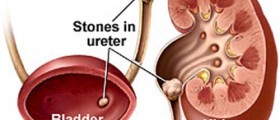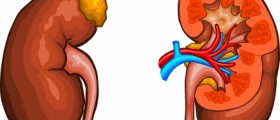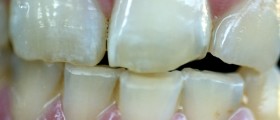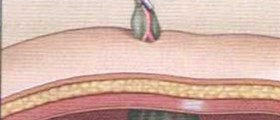
Kidney stones aren’t usually known until the advent of powerful pain that it can cause. Stones of about 5 mm in most cases body throws out independently which requires at least 4 weeks. This kind of treatment involves drinking large amounts of liquids and using pain killers. However, if the stone is larger than 10 mm or unable even after 4 weeks to move out, it can be carried out by some medical or surgical procedure.
The stone in the kidney does not need to be discovered only on the painful way. Given that there are stones that do not cause any symptoms, it may be discovered incidentally by routine examination, or due to a diagnosis of other diseases.
If the doctor estimate that the stone can go out of its own and if the patient think he/she is able to handle with pain, treatment in this way means taking medication for relieving pain that can be purchased at pharmacies without a prescription prescribed. The mostly used are nonsteroidal anti-inflammatory drugs, which strength and dosage is determined by the doctor depending on pain intensity. Besides that, the crucial thing is inputting large amounts of liquid to push the stone out. Chronic patients whose fluid intake is restricted should consult with the doctor before increasing it. Also, the drugs stimulating the release of a stone may be prescribed by a doctor. These drugs include alpha-blockers, which have proven very effective in removing stones from kidneys.
In the case of unbearable pain, infection or a blocked urinary tract caused by a stone recommends certain medical procedures or surgical interventions such as:
Extracorporeal shock wave lithotripsy (ESWL) - the most used method that uses the powerful waves that passes easily through the body and break the stone. Ureteroscopy - method is mainly used to remove the stone that was passed from the kidney into ureter. This procedure requires broaching a very narrow tube through the urinary tract locating the stone. Then the stone removes or breaks by specific instruments. Sometimes the installation of ureteric stent is required as a background element of this intervention. This drains the urine and crumbled stone pieces from the ureter. Nephrolithotripsy or percutaneous nephrolithotomy - a method that involves inserting a narrow telescope into the kidney through a back scion through which the stone removes or breaks down to easy eliminate. This method is used in case of failure ESVL method or if the stone is too big to come out. Open surgery - surgery which is rarely used and requires the removal of a stone through a cut made in the abdomen.Kidney stones are characterized by a tendency to consistently appear after its removal. Therefore, people who are prone to the formation of kidney stones should take certain precautions to avoid its occurrence. The best prevention method is drinking large amounts of fluid and a radical change in diet. In addition, the doctor may prescribe certain drugs that prevent formation of kidney stones. In order to avoid its re-emergence it is necessary to carry out urine analysis within 24 hours of the release of the previous stone. So it brings information about what type of stone is used which is very helpful in preventing its re-emergence.
In rare cases the kidney stones could appear due to excessive parathyroid gland activity leading to excessive levels of calcium. To prevent this situation, the removal of parathyroid gland can be proposed.

















Your thoughts on this
Loading...